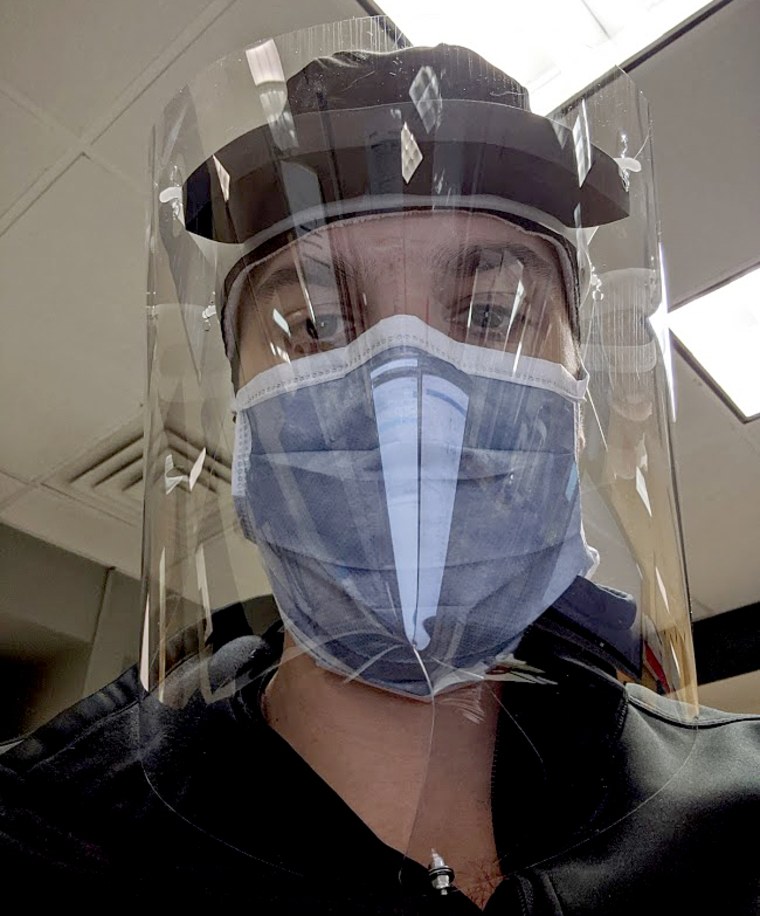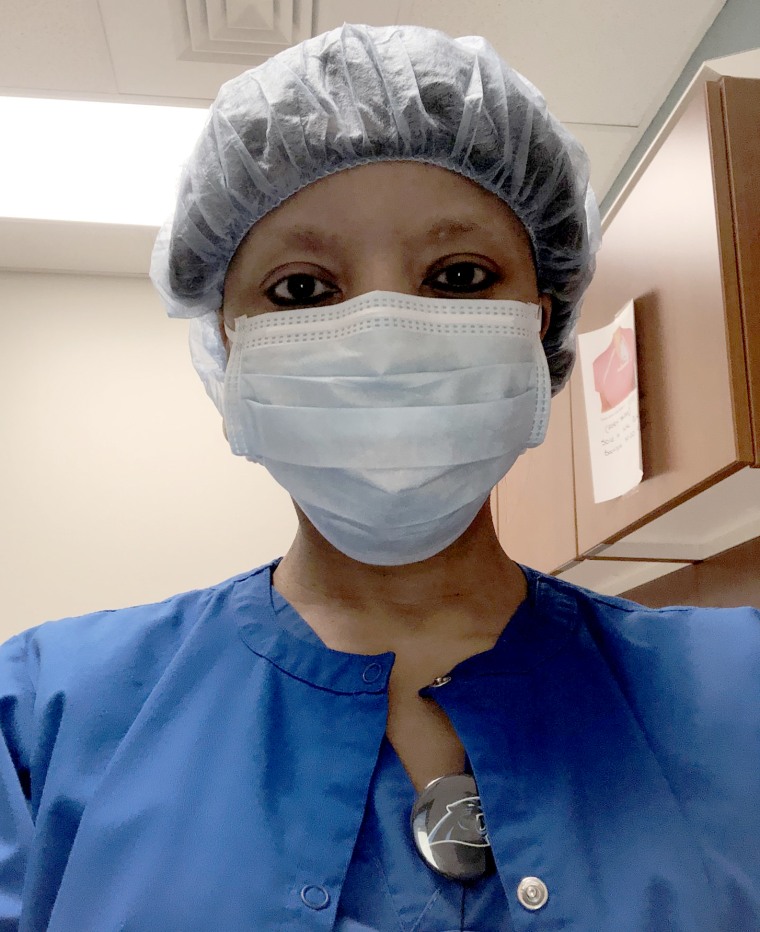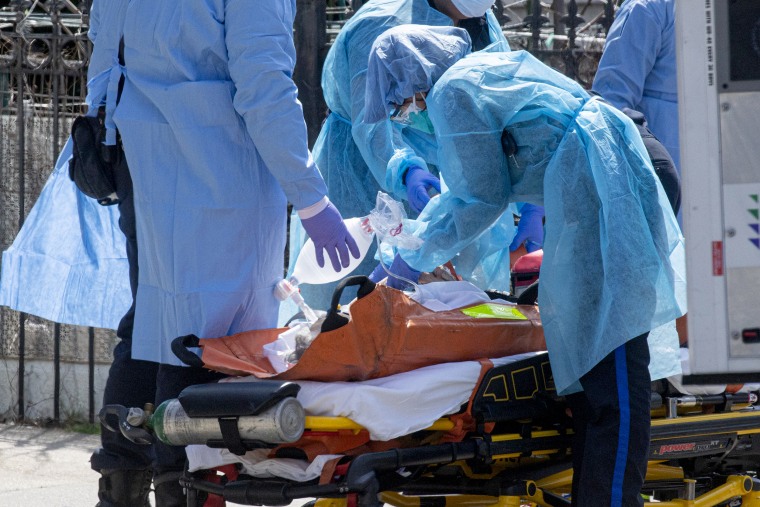Many medical workers toiling during the coronavirus pandemic remain burdened by another crisis that emerged long before the outbreak: crushing amounts of student debt.
Now is the time, those beleaguered health care professionals say, for Congress to provide meaningful relief, such as total loan forgiveness, in the vein of other legislation crafted following a national tragedy — as with first responders who were financially compensated after falling ill in the wake of the Sept. 11, 2001, terrorist attacks.
"They say we're at war, and we are putting our lives on the line," said Dr. Andrew Tisser, an emergency room physician in upstate New York who has treated patients with COVID-19, the disease caused by the coronavirus.
Full coverage of the coronavirus outbreak
Tisser began repaying his medical school debt five years ago, with the loans refinanced from federal to private lenders. "If I were to die from COVID right now," he added, "my family would be stuck with $433,000" in student debt.
With 45 million Americans owing about $1.7 trillion of student debt, a figure that more than doubled over the last decade, health care professionals are often on the hook for some of the largest loan amounts. The average debt of a graduating medical student is nearly $201,500, according to 2019 data from the Association of American Medical Colleges, a nonprofit that administers the Medical College Admission Test, or MCAT.
Tisser is part of a grassroots network of physicians who drafted an online petition aimed at Washington lawmakers. It asks Congress to ensure that all front-line medical workers, including physicians, nurses and emergency medical services professionals, get the personal protective equipment they need, as well as health care and tax credits; in addition, the petition seeks total loan forgiveness or at least a zero percent interest rate on their student loans. They also want all medical school debt — federal or private — to be discharged if a medical worker dies from COVID-19.
Tisser, who hosts a podcast about the health care system, said medical workers, in particular doctors, are "shackled" by the high costs of education. After four years of undergrad and four years of medical school, physicians are required to practice at least three years as part of a residency program at salaries of $40,000 to $60,000 a year.

Although full-time doctors do get a bump in their salaries and physicians are among the top income earners in the country, "you're in the highest tax bracket," Tisser said, "so it's like a double hit."
He added that the assumption that all doctors are rich is a myth.
"I know myself and my wife, we are physicians in our mid-30s, and we have a combined $1 million-plus student debt between the two of us," Tisser said. "We want to go out and take care of people. Nobody becomes a doctor for the money."
Similar petitions have been gaining momentum in recent weeks as the coronavirus' spread shows no signs of abating, with the numbers of cases and deaths in the U.S. surpassing those in all other countries last week.
A petition on MoveOn.org that has garnered nearly 500,000 signatures asks Congress in the next stimulus bill to forgive loans for doctors, nurses and other health care professionals, a nod to the GI Bill of Rights, which created a comprehensive education benefit for veterans during World War II.
Download the NBC News app for full coverage of the coronavirus outbreak
The campaign's creator wrote that "without the debt burden, more would work in lower-paying specialties like family practice, or in underserved rural and urban areas."
In March, President Donald Trump signed the Coronavirus Aid, Relief, and Economic Security (CARES) Act, part of which provided temporary financial relief to student borrowers with federal loans. The legislation, a $2 trillion aid package, allows borrowers to hold off on student loan payments until Sept. 30; during that time, interest won't accrue. If borrowers enter into default, their tax refunds won't be withheld and their wages won't be garnished.
Democratic lawmakers led by Sens. Elizabeth Warren of Massachusetts and Sherrod Brown of Ohio have sent letters urging student loan servicers to provide similar relief to borrowers with private loans.
Even before the pandemic, student borrowers could apply for income-driven repayment plans in which monthly loan payments are based on income and family size.
In addition, doctors and nurses working full time for government agencies and nonprofits are eligible for the Public Service Loan Forgiveness Program, which was launched in 2007. If they make 120 loan payments — typically over 10 years — the federal government can forgive the rest of their federal loans.
The program, however, has been criticized for having onerous payment and paperwork requirements. After Congress created a temporary fund in 2018 to help more borrowers qualify, a Government Accountability Office report found that 99 percent of applicants were rejected.
Joanne DeCastro, a registered nurse at a nonprofit acute care hospital in Seattle, determined that she's eligible to have part of her student loans forgiven through the program, but she still has about eight years to go with payments.
After she attended a private school and obtained a master's degree in nursing, her student debt is at more than $100,000. A 2017 study by the American Association of Colleges of Nursing found that the median range of graduate nursing debt was around $40,000 to $55,000.
"Nursing programs are getting ridiculously expensive these days, and monthly loan payments can be a huge inhibitor of obtaining things we work our tails off for, like a house or car," said DeCastro, whose hospital was in the thick of the early days of the region's outbreak. "And right now, we're risking our own lives and health and that of our families and loved ones to serve those who need us the most. So wiping off our financial debt would be a great show of appreciation."
In a more recent movement, some prominent medical schools are empowering students financially by agreeing to give those who qualify a free ride.
New York University announced in 2018 that it was offering free tuition to all of its medical school students to encourage more of them to choose lower-paying specialties.
In September, Cornell University's Weill Cornell Medicine in New York City announced that it would cover tuition and other expenses for all medical students who qualify for financial aid.
Dr. Augustine M.K. Choi, the dean of Weill Cornell Medicine, said the response has been "overwhelmingly positive," especially because it goes beyond tuition relief and replaces student loans with scholarships that cover living expenses, including housing, groceries, books and commuting costs.
"I believe relieving this financial burden has the potential to improve the well-being of our future physicians and, ultimately, patient care," Choi said.
He added that Congress could help future doctors by suspending the taxability of their scholarships.
Wiping off our financial debt would be a great show of appreciation.”
Matthew Shick, the senior director for government relations at the Association of American Medical Colleges, said that medical education must remain "accessible and affordable" for students of all backgrounds and that financial relief is necessary for those working during the national emergency, whether that includes loan forgiveness or hazard pay.
"But it can't just be a one-off," he said.
Julie Fresne, the association's senior director for student financial and career advising services, added that preliminary data indicate that people who take the MCAT but then choose not to attend medical school often cite financial and academic reasons.
"We want more underrepresented individuals in undergraduate education and medical school," Fresne said. "We really need to work on the pipeline to get people earlier and let them know they can afford to go. There is enough federal financial aid and other opportunities."
But the coronavirus has laid bare both the difficulties and the disparities within the health care system, experts say. To have a robust medical workforce readily available during a pandemic requires a continual stream of students who not only have access to education, but also remain committed to being in school and residency programs for several years, enduring through high-pressure situations and burnout.
"It takes a long time to turn someone into a physician," Shick said.

In addition, the cost of schooling and long-term student debt can dissuade people from lower-income and minority communities from entering the medical field.
"Unfortunately, most minorities don't have the luxury of generational wealth that others may have or just happen to be born and raised in a less-thriving socioeconomic class," said Lakeshia Hardy, a registered nurse with the Duke University Health System in North Carolina.
Hardy's student debt totals about $60,000 between federal and private loans, and she pays off $800 each month. She said she was the first in her family to go to college and never fathomed that to pursue her dream of becoming a nurse she would have to take on tens of thousands of dollars of debt.
As a nurse who floats among various departments, Hardy, 32, said she has seen the toll that caring for coronavirus patients has had on her colleagues. For them, the underlying stress of paying off student loans has been shunted aside for more pressing concerns, like staying safe and helping the patients.
"It's a huge weight. Not just on my shoulders but my whole body," Hardy said of her student debt. "America is supposed to be the land of opportunity, but at what cost?"

